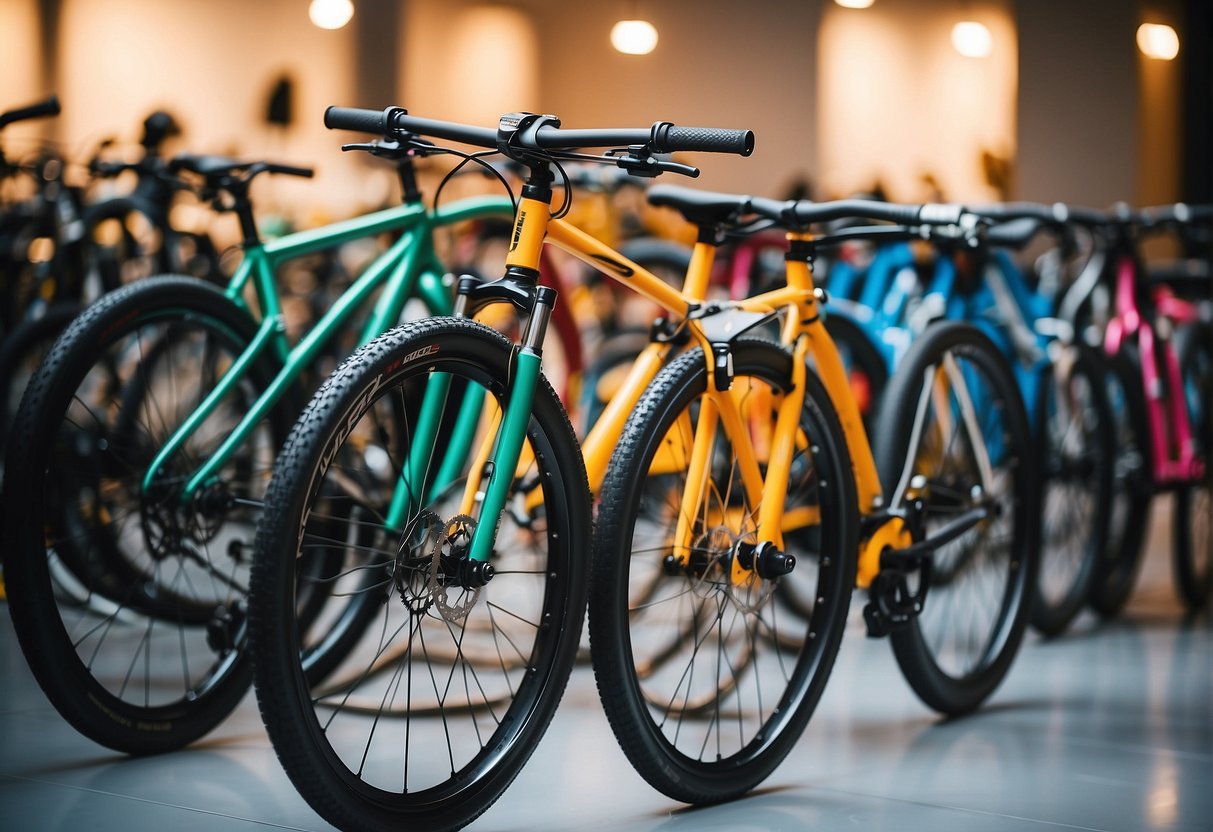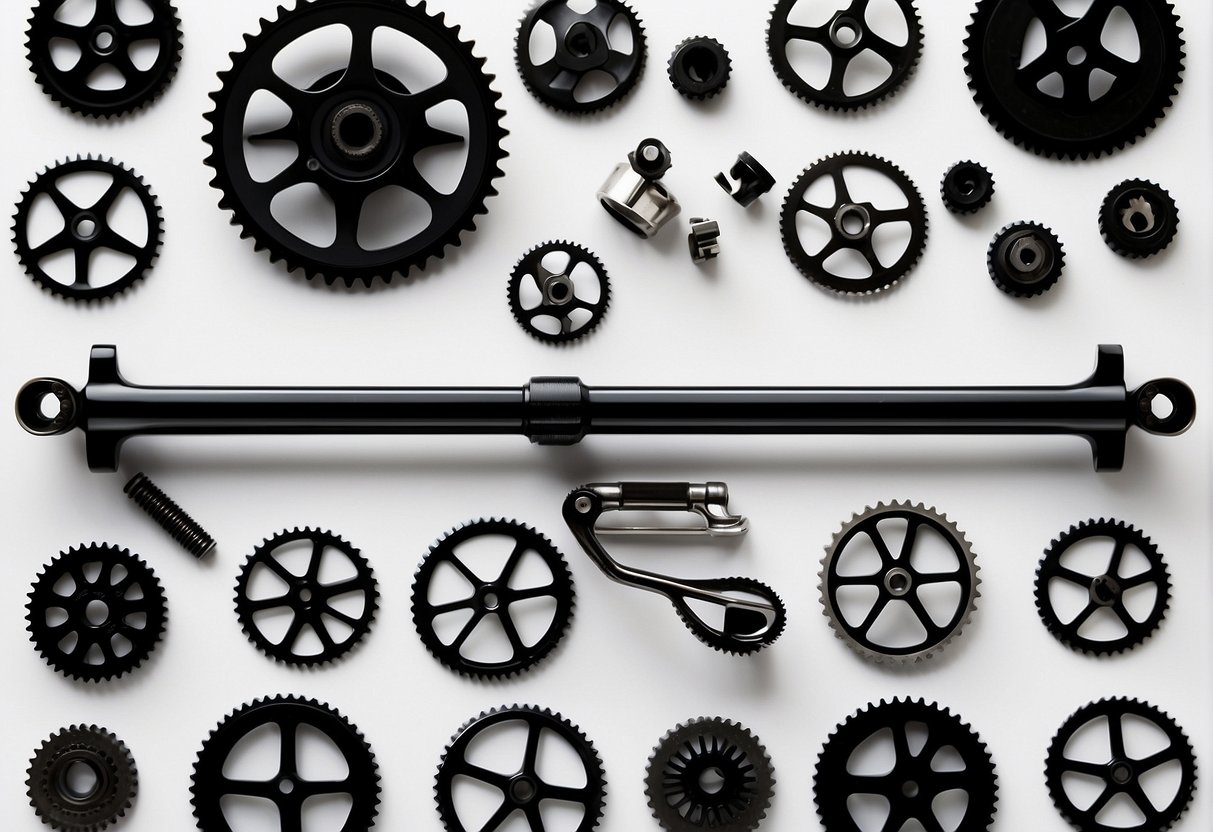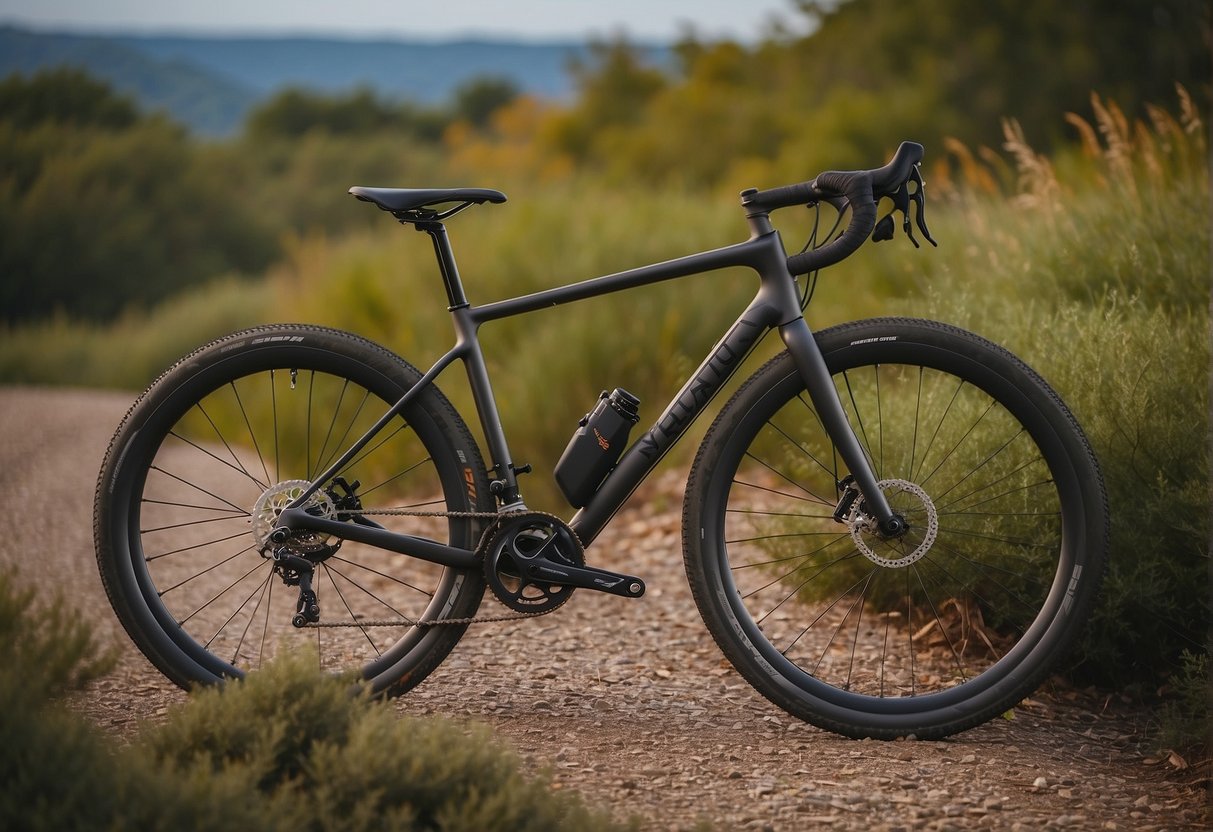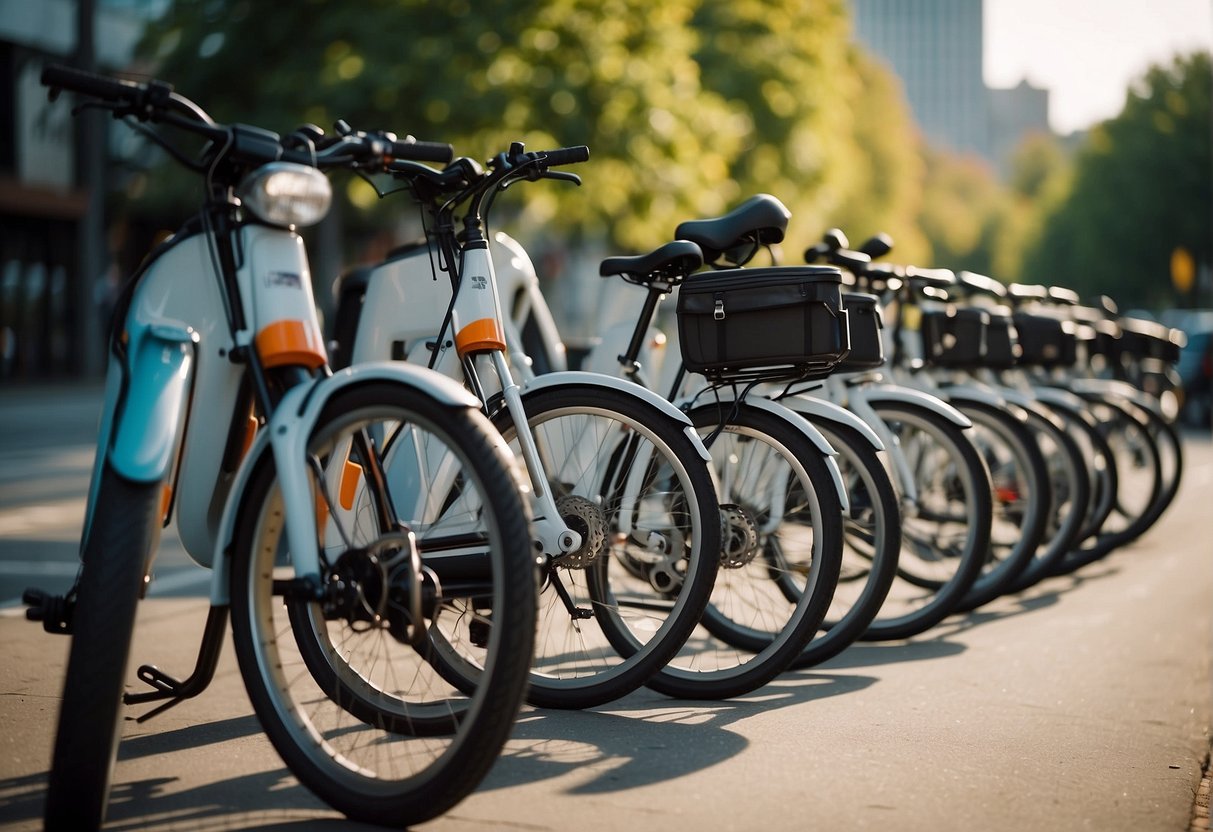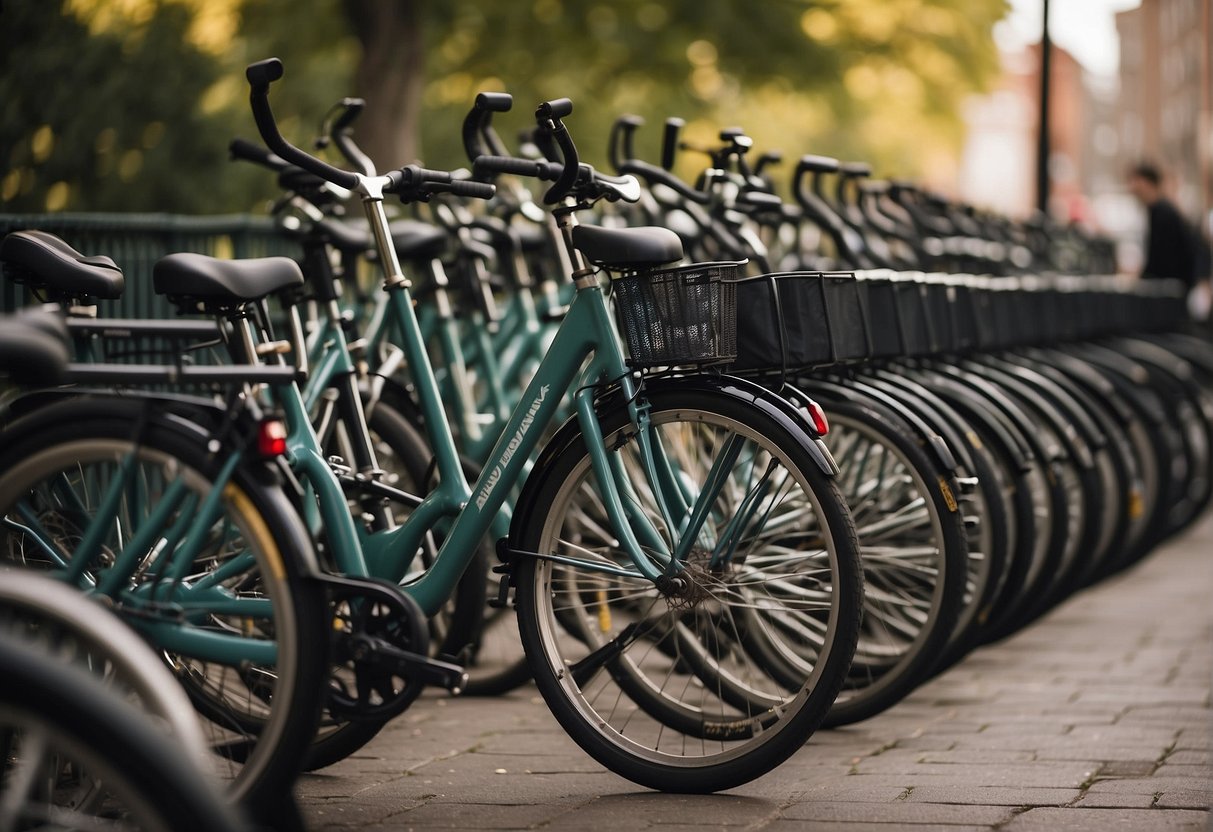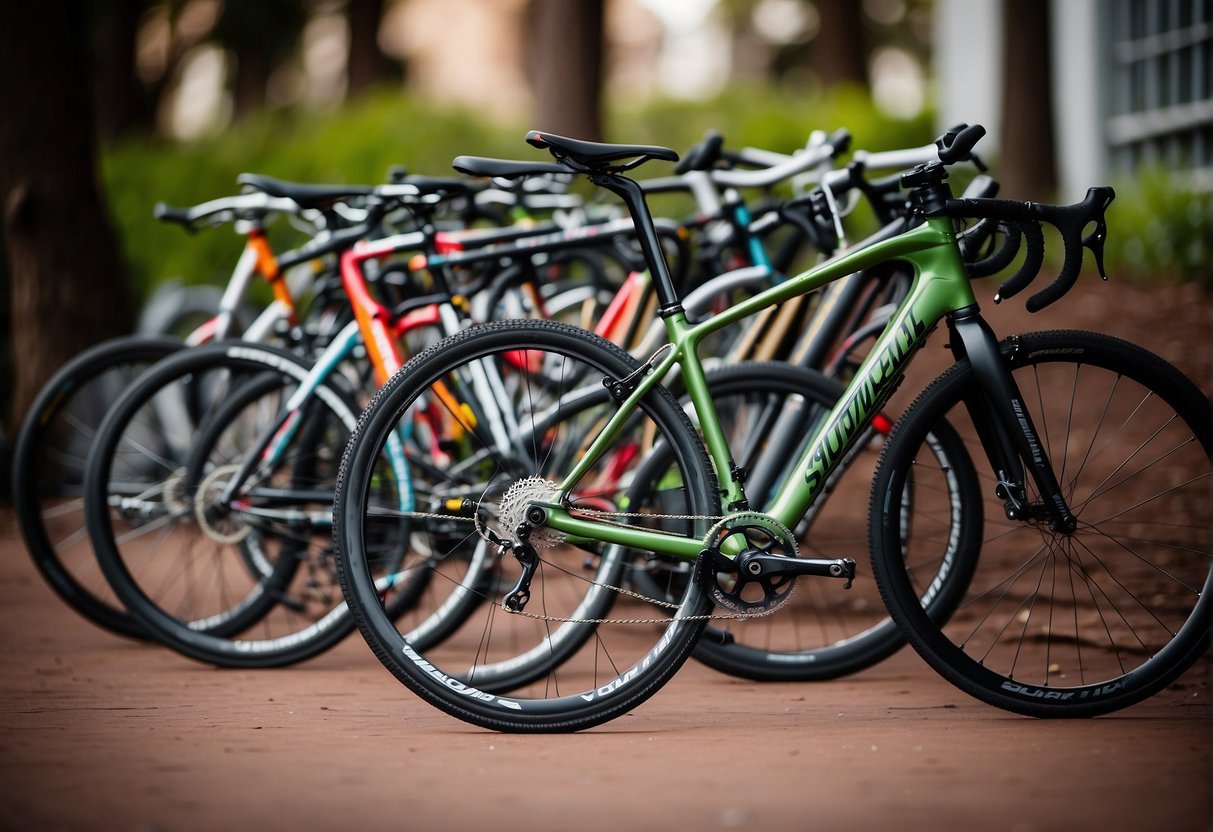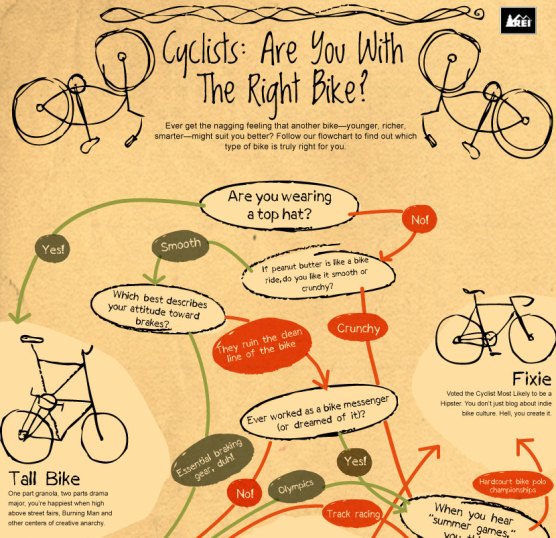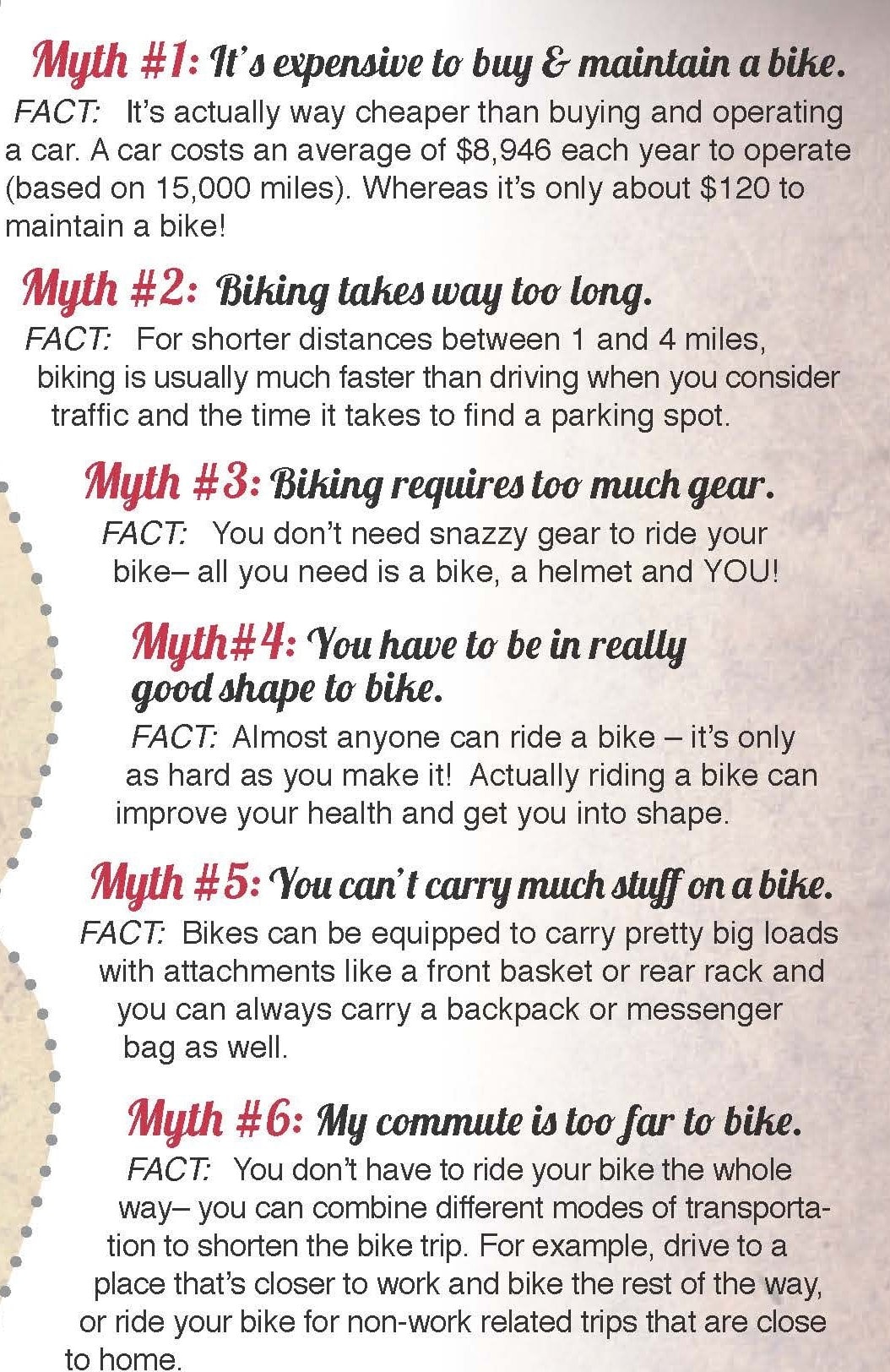The quest for the perfect bike can often be as challenging as the most grueling uphill climb. With a market saturated by a myriad of options, varying from the sleek road bikes designed for speed to the robust mountain bikes built for rugged terrain, the journey to find the ideal two-wheeled companion requires careful consideration. Each bike type is tailored to a specific kind of riding experience and what might suit one cyclist may not satisfy another. Gravel bikes, e-bikes, hybrids, and specialized bicycles each offer unique features that cater to different preferences and needs.
Understanding the critical components that make up a bicycle is essential in making an informed decision. Frame materials, braking systems, and suspension options can drastically alter ride quality and performance. Upgrades and maintenance are equally important, as they ensure the longevity and reliability of the bike. Additionally, the right fit is paramount for comfort and efficiency, which is why an understanding of bike ergonomics is integral to the selection process. There’s a lot to consider beyond the mere aesthetics of a bike – from the purpose it serves in your daily life to the accessories and apparel that will enhance your cycling experience.
Key Takeaways
- Selecting the best bike depends on individual needs and the type of cycling one is engaged in.
- Bike components and fit significantly influence the riding experience and personal comfort.
- Regular maintenance and understanding the nuances of different bike types are critical for optimal cycling performance.
Choosing the Best Bikes for Your Needs
Selecting the best bike requires careful consideration of the type, geometry, and material tailored to individual cycling needs and objectives.
Identifying the Right Type
One must first select the appropriate kind of bike. Road bikes are optimal for speed and efficiency on pavement, making them suitable for commuters and racing enthusiasts. Gravel bikes are versatile, designed for comfort and stability on both paved and unpaved surfaces. For those seeking assistance on their rides, e-bikes provide an electric motor that helps propel the bike, ideal for longer commutes or reducing physical strain.
Understanding Bike Geometry
Geometry is the blueprint that defines a bike’s handling and comfort. Road bike geometry is characterized by steeper angles and a shorter wheelbase, collectively enhancing agility and quick handling. Conversely, gravel bikes boast a longer wheelbase and slacker angles for better stability on rough terrain. E-bike geometry often mirrors that of the bike type it is emulating but may also feature a lower center of gravity to accommodate the motor and battery weight.
Considering Frame Material
The frame material significantly impacts the bike’s weight, durability, and ride quality.
| Material | Benefits | Considerations | Ideal Use |
|---|---|---|---|
| Aluminum | Lightweight and Corrosion-resistant | Stiff, can transmit road vibrations | Budget-friendly options, general use |
| Carbon Fiber | Extremely Lightweight, excellent vibration damping | Can be expensive, less durable in crashes | High-performance road and gravel bikes |
| Steel | High durability, natural vibration absorption | Heavier than aluminum and carbon fiber | Touring and traditionalist cyclists |
| Alloy | Often refers to aluminum alloys, general term for mixed metals | Varies based on specific alloy components | Specific needs depending on the alloy |
Aluminum is widely used for its balance of strength and lightness, suitable for both entry-level and advanced bikes. Carbon fiber offers the best performance but comes at a higher price point. Steel frames, known for their toughness, make a good option for heavy-duty use.
Top Road Bikes Reviewed
When selecting a road bike, riders consider price, performance, and suitability for beginners. This review focuses on top contenders in each category.
Best Value Road Bikes
Value road bikes offer a balance between quality and affordability, often featuring durable aluminum frames and reliable components. The Specialized Allez is a standout model praised for its responsive handling and comfortable geometry. Equipped with a Shimano Claris groupset, it brings high-end features to a budget-friendly price point.
High-Performance Road Bikes
For those seeking cutting-edge technology and speed, high-performance road bikes with carbon fiber frames are the top choice. The Cervelo S5 is a prime example, noted for its aerodynamic design and stiffness that ensure maximum power transfer. These bikes are typically equipped with top-tier components for precision shifting and optimal performance.
Road Bikes for Beginners
Beginners need a traditional road bike that’s forgiving and easy to handle. Models with stable geometry and user-friendly gear systems are preferred. Entry-level bikes often utilize aluminum frames to provide a mix of comfort and durability, ensuring a positive first experience on the road for new cyclists.
Essential Bike Components
When selecting a bike, the quality and design of essential components significantly impact performance and safety. The drivetrain and braking system are pivotal aspects of a bike’s functionality, requiring careful consideration.
Drivetrain and Gearing
The drivetrain of a bicycle is a critical component that includes the pedals, cranks, chain, and cassette. It determines the gearing of the bike, which directly affects a rider’s ability to exert torque and maintain speed across varying terrain. High-quality gear sets, like the Shimano 105, are sought after for their reliability and performance. This gearing system typically offers a balanced range of gears suitable for different gradients and riding styles.
- Chain: Transfers power from pedals to wheels.
- Crankset: Arms to which pedals attach; come in various lengths.
- Cassette: Gears on the rear wheel that influence resistance and speed.
- Derailleurs: Mechanisms that move the chain between gears.
A bike’s gearing is personalized according to the cyclist’s needs, whether for steep inclines or high-speed races. The precision in shifting gears can greatly enhance the cycling experience.
Brakes and Safety Features
Brakes are crucial for cyclist safety, providing the stopping power necessary to avoid collisions and control speed. There are two primary types of brakes found on modern bicycles: rim brakes and disc brakes. Rim brakes apply pressure to the wheel’s rim to slow down, while disc brakes utilize a metal disc attached to the wheel hub, clamped by brake pads.
- Rim Brakes: Better for dry weather; easier to inspect and maintain.
- Mechanical Disc Brakes: Operated by a cable; more consistent in wet conditions than rim brakes.
- Hydraulic Disc Brakes: Use fluid for more powerful, precise braking; preferred for mountain biking and serious road cycling.
Disc brakes, particularly hydraulic disc brakes, offer superior performance as they provide more consistent stopping power in diverse conditions and are less impacted by rim damage or wet and muddy environments. Tires also contribute to the braking efficacy, as the traction they provide is integral when the brake is applied. A well-selected brake system tailored to the rider’s needs is essential for optimal bike control and rider confidence.
Best Gravel Bikes on the Market
Gravel bikes have become increasingly popular for their versatility, combining the speed of a road bike with the durability of a mountain bike. They are specifically designed to perform well on varied terrains, from smooth asphalt to rugged trails.
Gravel Bikes for Adventure Riding
For those seeking adventure and long-distance off-road riding, Specialized Diverge E5 stands out with its impressive tire clearance and a sturdy yet lightweight alloy fork. This bike can accommodate up to 700x42mm or 650b x 47mm tires, providing stability and comfort on rough terrains. The frame offers multiple mounts for fenders and racks, allowing riders to equip all the necessary gear for extended journeys. The Diverge E5’s advanced geometry ensures a responsive ride, suitable for both fast-paced escapades and leisurely exploration.
- Top Adventure Riding Choices:
- Specialized Diverge E5: Durable, lightweight and with ample tire clearance.
- Bike Model X: Known for robust fork and gear mounting options.
Gravel Bikes for Everyday Use
When it comes to everyday use, riders often prioritize comfort, convenience, and reliability. Exceptional gravel bikes for daily riders feature frames that allow both fender and rack installations to cater to commuters and hobbyists alike. A gravel bike designed for everyday use should offer a comfortable geometry that helps maintain an efficient and upright riding position, ensuring practicality and ease over any terrain.
- Best Everyday Gravel Bikes:
- Bike Model A: Comes with fender-ready frame and comfortable geometry for daily commutes.
- Bike Model B: Offers reliability with options for personalized rack and mount setups.
E-Bikes: Revolutionizing Commutes
Electric bikes, commonly known as e-bikes, are transforming the way individuals think about urban travel. They merge efficiency and advanced features that cater specifically to the needs of city commuters.
Best E-Bikes for City Riding
When selecting an e-bike for city riding, the design often takes precedence. Step-thru frames are highly sought-after due to their ease of mounting and dismounting in urban environments. Models with integrated lights and high-capacity batteries ensure visibility and extended range, vital for daily commutes. Here are top picks tailored for city riders:
- Glide Urban Plus: This bike features a step-thru design, perfect for stop-and-go traffic and easy handling.
- Metro Commuter X2: Equipped with powerful lights and a durable battery, it stands out for safety and longevity.
Each model is selected for its blend of comfort, convenience, and reliability, offering riders a seamless city commute.
E-Bike Performance Factors
E-bikes are characterized by certain performance factors essential for commuting:
- Battery Life: A high-capacity battery is critical. It dictates how far the bike can travel on a single charge, impacting daily use without frequent recharging.
- Torque Sensor: This component is responsible for a smooth riding experience, adjusting the motor assistance based on the rider’s pedaling force.
| Factor | Description |
|---|---|
| Battery Life | The duration the e-bike can operate without needing a recharge. |
| Torque Sensor | Ensures responsive power assistance, enhancing the natural biking experience. |
These factors determine the overall performance and suitability of an e-bike for commuting purposes. Models with robust batteries and intuitive torque sensors are often preferred by daily commuters for their reliability and ease of use.
The Ultimate Mountain Bikes
Selecting the ultimate mountain bike relies on the kind of terrain and riding style one prefers. This discussion revolves around two main categories of mountain bikes, each tailored to specific trail demands and riding experiences.
Trail-Ready Mountain Bikes
Trail-ready mountain bikes are versatile performers on varied terrain. These bikes balance uphill efficiency with downhill prowess. A prominent example is the Specialized Stumpjumper. It packs a host of features suitable for riders who demand agility and control. With its lightweight frame and responsive suspension, it tackles technical ascents and descents with ease.
- Frame: Light, robust, and designed for maneuverability
- Suspension: Typically between 130 mm and 150 mm, balancing comfort and control
Cross-Country Mountain Bikes
For riders focused on speed and endurance, cross-country mountain bikes stand out. These bikes are designed to excel in races and long-distance riding. The Trek Supercaliber is a testament to cross-country performance with its advanced aero frame and innovative suspension system that shaves off unnecessary weight while providing just enough cushioning for racing efficiency.
- Frame: Aerodynamically optimized for speed
- Suspension: Lighter and tighter, typically between 100 mm and 120 mm, to prioritize pedaling efficiency over bump absorption
Bike Upgrades and Maintenance
Investing in the right upgrades can significantly enhance a bike’s performance, while regular maintenance ensures a smooth and reliable ride.
Enhancing Your Bike’s Performance
To achieve a smooth ride with improved handling, cyclists often look toward upgrading certain components of their bike. A common upgrade includes switching to lightweight wheels that reduce the overall weight and improve acceleration. Riders may also consider upgrading the suspension for better handling over rough terrain. A high-performance drivetrain can offer more precise gear shifts and an overall smooth riding experience. When selecting upgrades, it’s crucial to consider compatibility with existing components to ensure seamless integration and functionality.
- Wheels: Lightweight materials, aerodynamic profile
- Suspension: Adjustable settings, quality dampers
- Drivetrain: High-quality gears and chains for efficient power transfer
Routine Maintenance and Upkeep
Maintenance is an ongoing commitment that preserves a bike’s condition and performance. Regular cleaning and lubrication of the chain prevent premature wear and maintain smooth pedaling. Checking tire pressure and brake pads regularly is vital for a safe and responsive ride. Seasonal servicing might include gear adjustments and cable replacements to maintain optimal performance.
- Cleaning: Regular cleaning of the bike frame and components
- Lubrication: Use of recommended lubricants on moving parts
- Inspections: Systematic checks for wear and tear
- Adjustments: Tuning gears and aligning brakes for consistent performance
Hybrid and Commuter Bike Choices
In selecting hybrid and commuter bikes, the focus centers on user-friendly features and efficiency, with bike fit and design playing pivotal roles in the overall cycling experience.
Top Picks for Urban Cyclists
For the urban cyclist, the landscape of commuter bikes offers options that emphasize a sleek design and practicality. The Canyon Commuter 7.0 stands out with its lightweight aluminum frame and integrated accessories tailored for the city rider. It boasts a belt drive system that minimizes maintenance, making it a top choice for regular commuters.
Another notable mention is the Trek FX 3 Disc, equipped with a carbon fork to dampen road vibrations and a Shimano groupset that ensures reliable shifting across a versatile gear range.
Hybrid Bikes for Versatile Riders
Hybrid bikes strike a balance between comfort and agility, which is evident in models like the Specialized Sirrus X 4.0. It features a comfortable but performance-oriented body geometry and a 1x drivetrain, providing a wide range of gears without the complexity of a front derailleur. Additionally, its Future Shock suspension system adds comfort without compromising efficiency.
The Giant Escape 2 City Disc is another excellent hybrid that is appreciated for its best hybrid performance at a reasonable price-point. With a commendable bike fit, a 2×8-speed drivetrain, and disc brakes for consistent stopping power, this bike stands as a versatile partner for both recreational rides and daily commutes.
Specialized Bicycles: A Closer Look
Specialized Bicycles has cultivated a strong reputation for producing high-quality bikes suited to a variety of needs. Their touring and adventure bikes have been praised for their durability and attention to detail, while options for the roadside are applauded for their reliability and performance.
Touring and Adventure Bikes
Specialized’s touring and adventure bike offerings include robust models like the Specialized Diverge E5. Designed for reliability across long distances and varied terrains, this bike is engineered with a premium aluminum frame and a versatile geometry. The Diverge E5 is an excellent choice for those who are looking for a balance between a touring bike and an adventure bike, offering a smooth ride on both highways and backcountry trails.
- Frame: Premium E5 Aluminum
- Geometry: Open Road Geometry
- Tires: 700×30/38mm Clearance
- Gearing: Wide range, suitable for varied terrain
This adventure-focused lineup is complemented by features such as a sturdy frame, wide tire clearance, and a forgiving gear ratio to tackle challenging elevations.
Beside-the-Road Options
When considering specialized bike styles for use primarily on paved surfaces, State Bicycle Co. provides an interesting comparison. Although not a Specialized brand, State Bicycle Co. designs models tailored for the road and are notable for their customization options and aesthetic diversity. Specialized, on the other hand, offers well-engineered bikes made to endure the daily demands of road cycling with a focus on performance and comfort.
While folding bikes do not feature prominently in Specialized’s core lineup, the brand’s dedication to innovation and rider experience is evident in their road series. Their bikes come with ergonomic seating and responsive control systems, allowing for a more enjoyable ride alongside traffic or during a solo sprint down a stretch of open road.
- Components: High-quality, durable
- Design: Focus on comfort and control
- Purpose: Designed for daily use and performance cycling
In summary, Specialized Bicycles demonstrates excellence in engineering with its touring and adventure bikes, alongside tried-and-true road options, offering riders dependability, comfort, and performance.
Cycling Essentials: Accessories and Apparel
When preparing for a ride, cyclists should prioritize both protection and comfort. This selection of accessories and apparel provides riders with the necessary gear to enhance safety and performance, as well as personal style on the road.
Safety Gear and Tools
Safety Gear:
- Helmets: Essential for head protection, helmets should have a snug fit and be certified for cycling.
- Lights: Front and rear lights increase visibility in low-light conditions. LED lights offer long-lasting, bright illumination.
- Reflective Clothing: Jackets or vests with reflective material help riders remain visible to other road users.
Tools:
- Multi-tools: Compact devices featuring a variety of screwdrivers and wrenches for on-the-go repairs.
- Puncture Repair Kits: Essential for fixing flat tires, including patches, adhesive, and tire levers.
| Item | Description |
|---|---|
| Fenders | Shield bikes and riders from mud and road spray. |
| Rack | Sturdy racks mount to the back of the bicycle, perfect for carrying bags or panniers. |
Comfort and Style on the Road
Apparel:
- Cycling Jerseys: Made from moisture-wicking materials, jerseys are designed to keep cyclists cool and dry.
- Bib Shorts/Pants: Padded shorts or pants provide cushioning for longer rides.
Cycling Specifics:
- Gear Range: Having a wide gear range helps cyclists tackle varied terrains. Look for bikes with multiple chainrings and a broad range of cogs.
- Belt Drives: Some cyclists prefer belt drives over traditional chains for their durability and low maintenance.
To further enhance comfort and performance, riders can look into customizing their bike’s gear settings or upgrading to more ergonomic accessories. Essential for longer trips, a gear range with the right mix of chainrings and cogs can make a significant difference in riding efficiency.
Understanding Bike Fit and Comfort
Proper bike fit is crucial for comfort and performance. A correct fit ensures a balanced ride and helps mitigate the risk of injury.
The Importance of Proper Fit
Bike fit refers to the process of adjusting a bicycle to suit the rider’s body dimensions, ensuring a comfortable and efficient riding position. A well-fitted bike caters to individual body measurements, such as inseam length, reach, and torso height, which influence the bike’s geometry. The geometry of a bike includes the angles and sizes of the frame tubes, which are engineered to provide a specific ride quality, whether it be stiff and responsive for racing, or more relaxed for endurance rides.
A balanced position on the bicycle optimizes the rider’s weight distribution between the front and rear wheels. This balance is critical for stability and control, especially when descending or navigating corners. The saddle height and position directly affect leg extension and power transfer through the pedals. A saddle that is too high or too low can lead to discomfort and a loss of efficiency.
Adjustments for An Optimized Ride
Making precise adjustments to a bike can significantly enhance the riding experience. Riders should focus on the following key areas:
-
Saddle: Adjusting saddle height, angle, and fore-aft position is paramount for maintaining proper leg extension and hip rotation, which contribute to pedal efficiency and comfort. These adjustments also prevent the strain on knees and thighs.
-
Handlebars: Drop bar bikes offer multiple hand positions, which can be tailored for comfort over long distances or aerodynamics while racing. The height and reach to the handlebars should allow the rider’s shoulders and arms to be relaxed, reducing strain and fatigue.
-
Cassette and Gearing: The bike’s cassette impacts how easily a rider can pedal, especially on varying terrains. A cassette with a wide range of gears can help in finding an optimal cadence, which is helpful for climbs and accelerations.
-
Chassis: The bike’s chassis, or main frame, affects the overall stiffness and ride quality. A stiff chassis is desired for racing as it transfers more power from the rider to the wheels, whereas a slightly more flexible frame might be more comfortable for longer, leisurely rides.
Focusing on these adjustments can greatly improve a rider’s comfort and the bike’s performance. A professional bike fit is advised for anyone looking to tailor their bicycle to their individual needs, ensuring a thorough and personalized approach.
Frequently Asked Questions
This section addresses some of the common inquiries from individuals seeking advice on selecting and understanding the best bicycles for different purposes and preferences.
What are the top-rated bicycles for adult riders?
The top-rated bicycles for adult riders typically include models from brands like Trek, Specialized, and Cannondale. These bikes are praised for their comfort, durability, and performance.
Which brands are considered to be the best in mountain biking?
Brands such as Santa Cruz, Yeti, and Giant are highly regarded in the mountain biking community for their superior traction, shock absorption, and rugged build quality.
What are the best hybrid bicycles based on expert reviews?
Expert reviews often rate the Trek FX, Cannondale Quick, and Specialized Sirrus among the best hybrid bicycles for their versatility, smooth ride, and quality components.
How do I determine the right type of bicycle for my needs?
The right type of bicycle depends on the rider’s intended use, environment, budget, and personal comfort. It’s essential to consider factors like frame material, wheel size, and gearing when choosing a bike.
Where can one find trustworthy and in-depth bike reviews?
Trustworthy and in-depth bike reviews can be found on websites such as Cycling Weekly, BikeRadar, and the website of the magazine Bicycle Times. These sources offer professional insights and comprehensive analyses.
What are the best mountain bikes available for under $1,000?
Some of the best mountain bikes under $1,000 include the Co-op Cycles DRT 1.1, Trek Marlin series, and Specialized Rockhopper. They offer a balance of quality and affordability for entry-level riders.
Are you With the Right Bike
Ever get the nagging feeling that another bike-younger, richer, smarter-might suit you better? Follow our flowchart to find out which type of bike is truly right for you.
Source
Bike Myths
There really is no good reason not to bike
Source


